A short story of a small vintage ceramic bowl and a boy from Wisconsin who was poisoned.
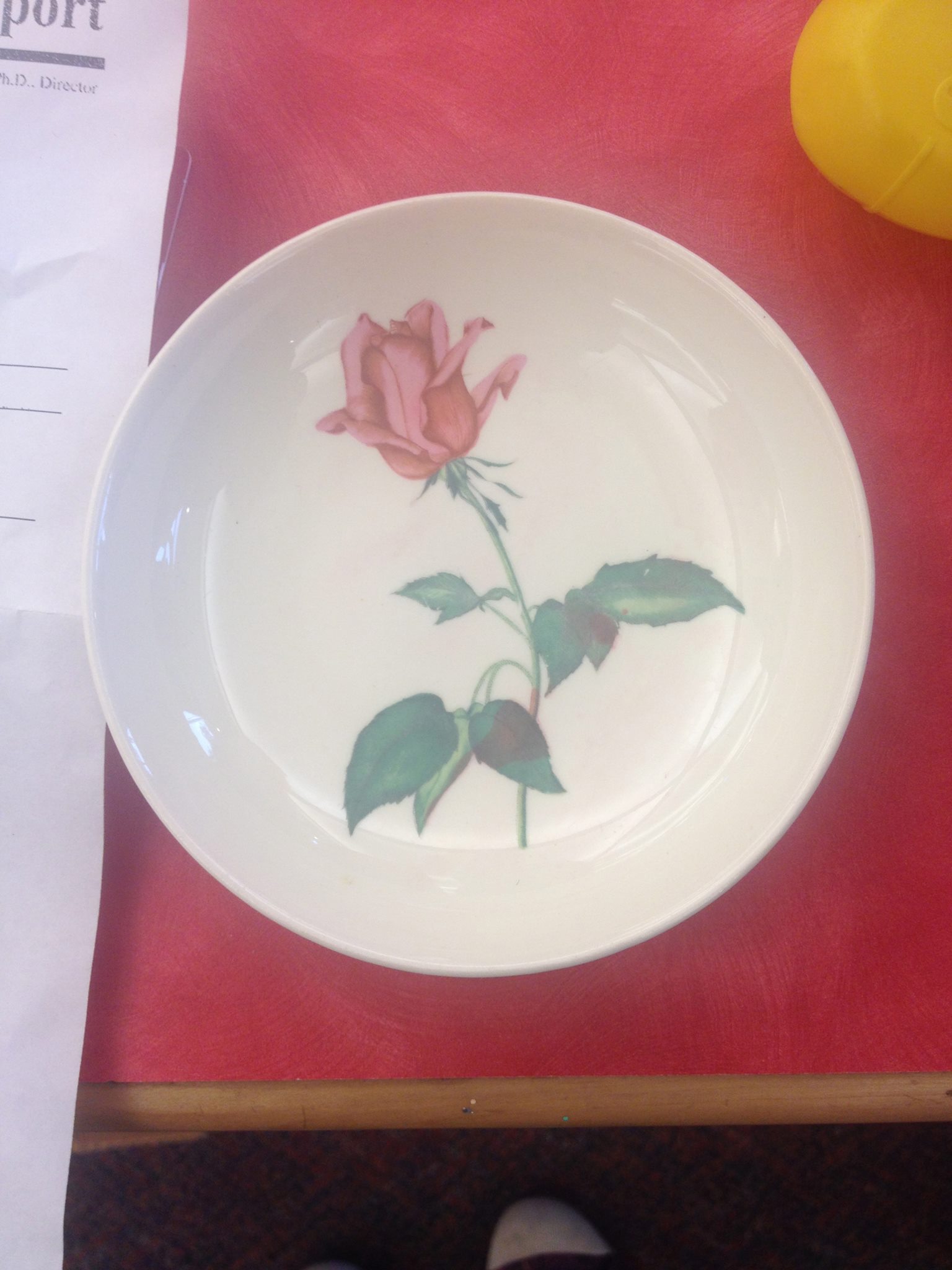 I originally shared this in October of 2013, but given how much we have learned about dishware and lead since then, I thought it was an important one to re-share!
I originally shared this in October of 2013, but given how much we have learned about dishware and lead since then, I thought it was an important one to re-share!
I have quite a few friends in Wisconsin and have been invited several times to present to groups there (including presentations in Milwaukee, Madison and Racine). In October of 2013, to celebrate Lead Poisoning Prevention Month with my Wisconsin friends, we collaborated on quite a tour-de-force of lead poisoning prevention events — which included being called upon to pull up my puppetry training, as I collaborated with Peppi the Lead-Free Clown on lead poisoning prevention puppet shows for literally hundreds of Racine area head start kiddos! (I believe it was about 200+ kids, it was two full audiences of tiny kids in the facility’s gymnasium!) We also had free preview screenings of my film across the State that week, we gave away thousands of free LeadCheck swabs, and of course we did several free XRF testing events, including one at a local library in Racine (where the public was invited to bring their toys, dishes or other things in to be instantly tested for lead and other elements).
At the toy testing event at the library, with an XRF instrument, I tested a vintage bowl that had a rose decal in it (pictured here.) The woman who brought the bowl in for testing told me the story of the bowl before I tested it. Here’s the story as I remember it…
A little boy in Wisconsin had a mother who had to wake up and leave for work very early each day. The boy’s grandmother lived nearby. Every day mom would wake up her kiddo and take him to grandma’s home and leave for work. Grandma would then finish the morning routine with the kiddo. She would give him breakfast and care for him until the mother was done at work.
Grandma was really focused on making sure the little boy would have a good experience and feel special. Every morning he had his cereal mixed in a rose decorated bone-china bowl, pictured here. Then grandma would put the bowl in the microwave to heat up the cereal.
When the boy tested positive for lead in his blood an investigation was done — and this bowl was, tragically, determined to be the source of his poisoning!
- This glaze on the surface of this little bowl tested positive for lead at 52,000 parts per million when tested with an XRF instrument.
- The amount of lead that is considered toxic in a newly manufactured item intended for children is anything 90 ppm or higher in the coating.
- The lead in the glaze of this bowl leached into this little boy’s cereal each morning and was determined to likely be the sole source of his lead poisoning.
- A leach test on the bowl resulted in 92 parts per million lead leaching into the bowl’s contents.
- 92 parts per million (ppm) is 92,000 parts per billion (ppb).
- For context, the current Federal standard for lead in water sets the “unsafe” level at 15 parts per billion and higher! [Scientists working on setting standards designed to be protective of children’s health have suggested this standard be lowered to 5 ppb.]
Nearly five years after I tested this little bowl, almost every day people ask me whether or not I think their dishes will poison them (if their dishes are positive for high levels of lead.)
In giving advice, I always try to err on the side of caution, depending on several factors (lead level as tested with an XRF, age of piece/ year of manufacture, state of wear, history of items from that brand, etc.) However, whenever I see china or dishes of any kind that test positive in the tens of thousands range (10,000 ppm, 20,000 ppm, … or more), I think of this story, and of this little boy from Wisconsin, and I wholeheartedly encourage them to just throw these dishes out.
Read: What should I do with my leaded dishes.
This story, this EXACT story is the origin of my “Grandma Consideration” that I share with nearly every single family I talk to in person.
Here’s my “Grandma Consideration”…
YOU are Grandma (eventually, or possibly even already!) You don’t use these dishes every day. These dishes sit on your china shelf for “decorative purposes” and you aren’t personally concerned about the lead in them because you don’t use them every day. You have held on to them for sentimental value. (They were your mother’s? You got them for your wedding? You inherited them from a special friend?)
But what happens years from now when you die? When you hand these down to your children and then your grandchildren. By then your grandchildren will be in college, or maybe have a family of their own. They miss you. They want you to be be part of their every day life… so they choose to use YOUR fine china as THEIR every-day china as a way to remember you. Every day at home…every day in college…every day.
Do you want to be responsible for the potential poisoning of your grandchildren?
I say, please consider getting rid of any vintage dishes like this; the sentimental value is not worth the potential health impact on your babies, and their babies and their babies.
Tamara Rubin
Mother of Lead Poisoned Children
#LeadSafeMama
Unfortunately, since testing and reporting on the lead level of dishes (and other consumer goods) was not a focus of my advocacy when I took this picture of the bowl from this story (back in 2013), I did not think to take a photo of the back of the bowl (which might have had a maker’s mark with the brand, design name or place of manufacture), so I don’t have any more information about this specific bowl. If this particular blow looks familiar to you and you can tell me more about it to add to this post, please send me a note. Based on what I do know about this bowl (compared to other dishes I have tested), it is likely from c. 1930 to 1940 (although could be a new as 1950s.) Most dishes of this era have unsafe levels of lead. you can see more leaded china that I have tested by clicking here.
UPDATE” Since posting this, a friend of mine messaged me that she grew up with these same dishes and she sent me pictures with the maker’s mark. They are below. As some dishes are manufactured in different locations and different years I am going to leave this request for information up, in case others have additional information they want to share. Based on Serina’s info I now know that these dishes were likely made in “Universal” [Potteries] [c. 1934 to 1954] in “Cambridge, O.” and marked “Oven Proof” by the “National Brotherhood of Operative Potters” & “Made In USA” . I believe the “O.” on the logo stands for “Ohio”, but I will continue to do more research.
I just confirmed that the pottery was likely made before 1951 when the name of the “National Brotherhood of Operative Potters” would have been changed to the “International Brotherhood of Potters.”
Update (4/26): Story updated with minor corrections.
Update (4/26 to be posted shortly): Besty Ross is also a pattern name for this same pottery design, additional photos and details for this second pottery line (with the same design/ from the same era) will be posted shortly.
The photo directly below is the actual bowl that poisoned the boy in Wisconsin:
Photos below are of pottery from what looks like the same line from my friend Serina.
These belonged to her great grandmother. This particular piece was rarely used.
Serina reported that her bowls were used frequently and were very worn.
Never Miss an Important Article Again!
Join our Email List


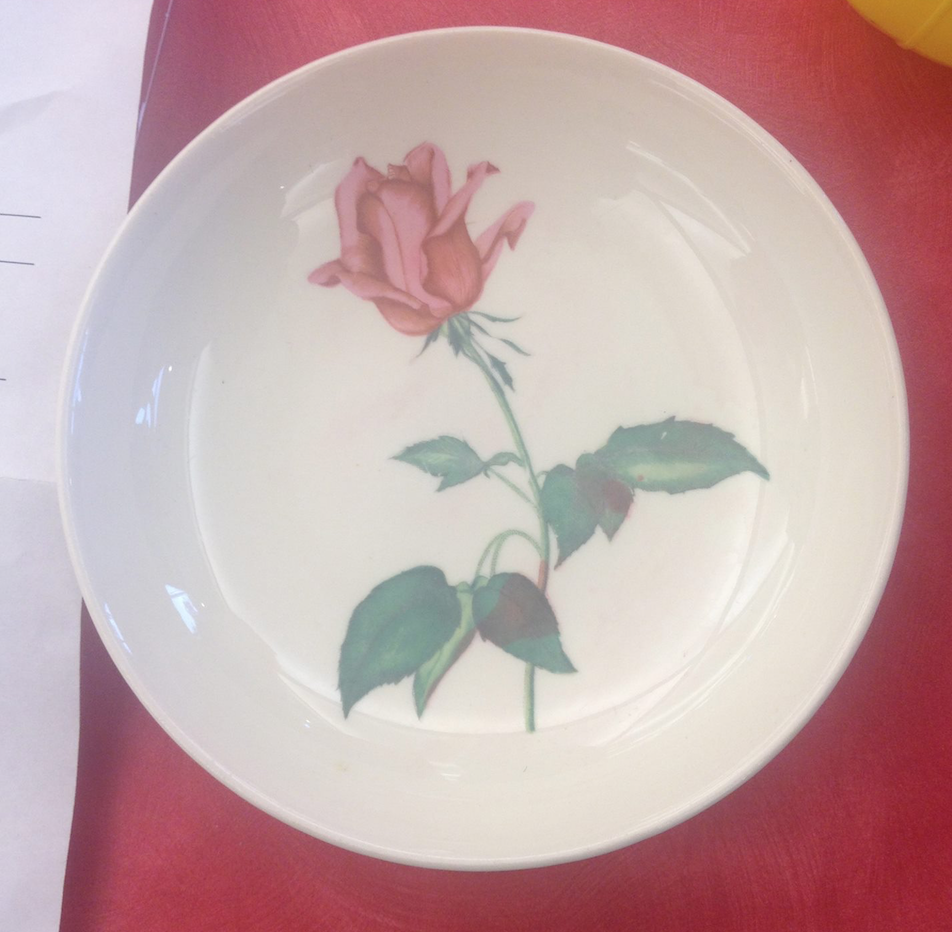
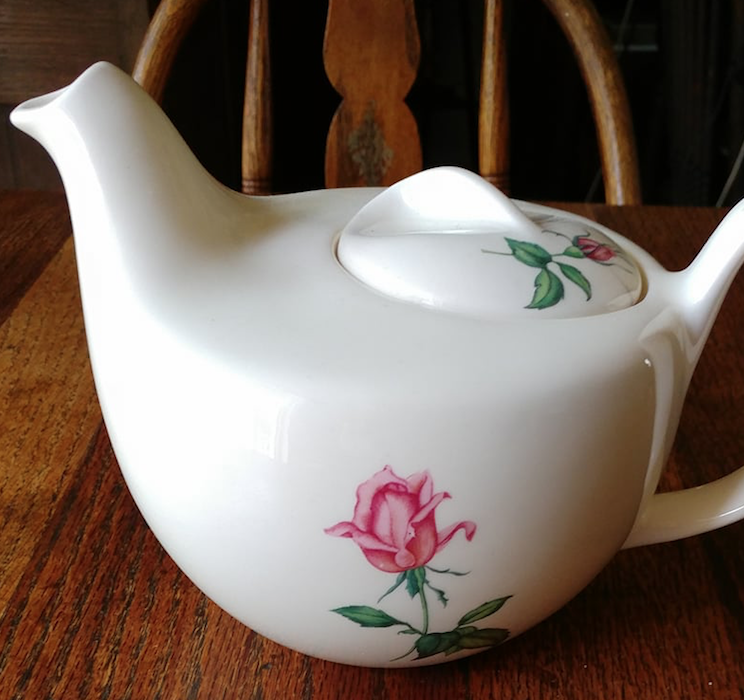
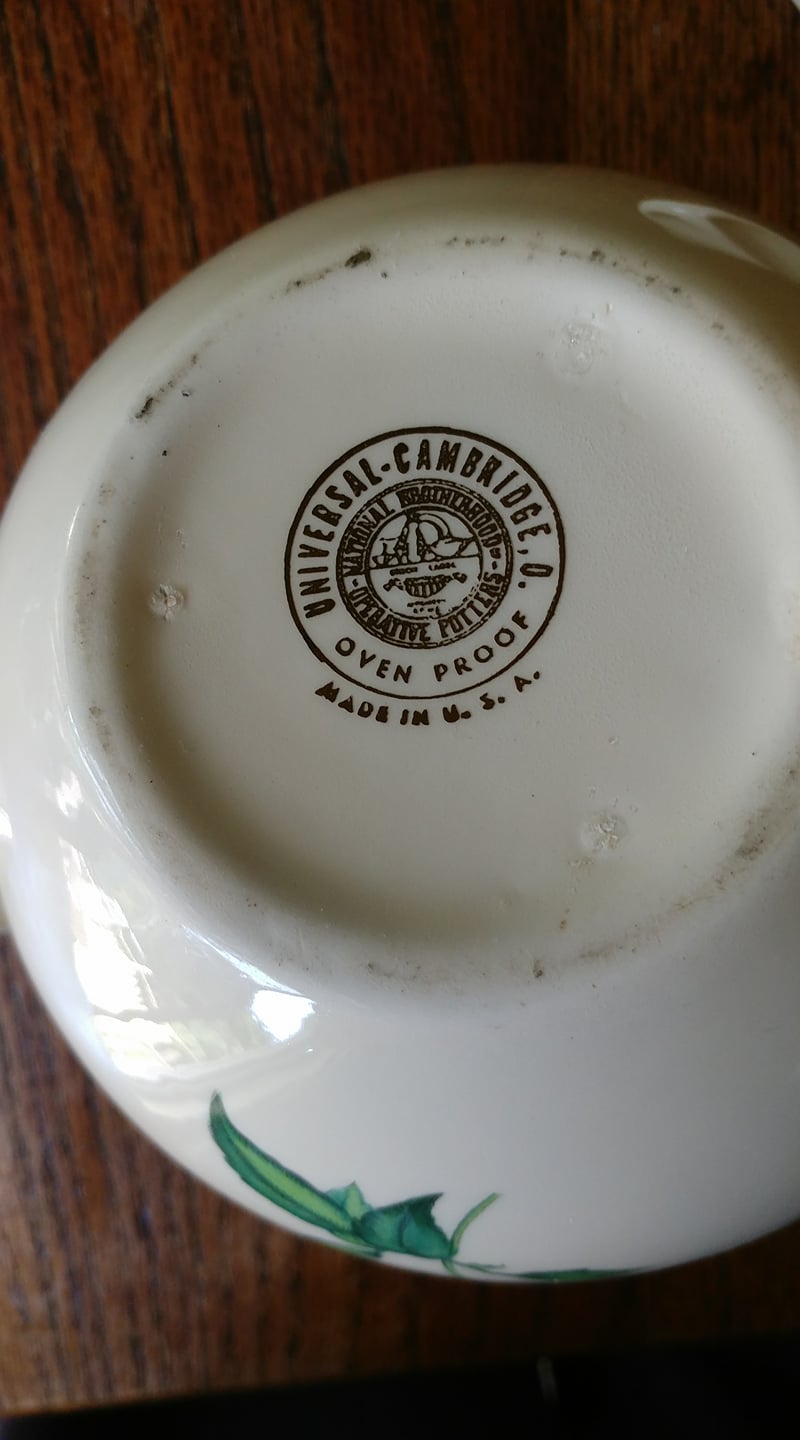
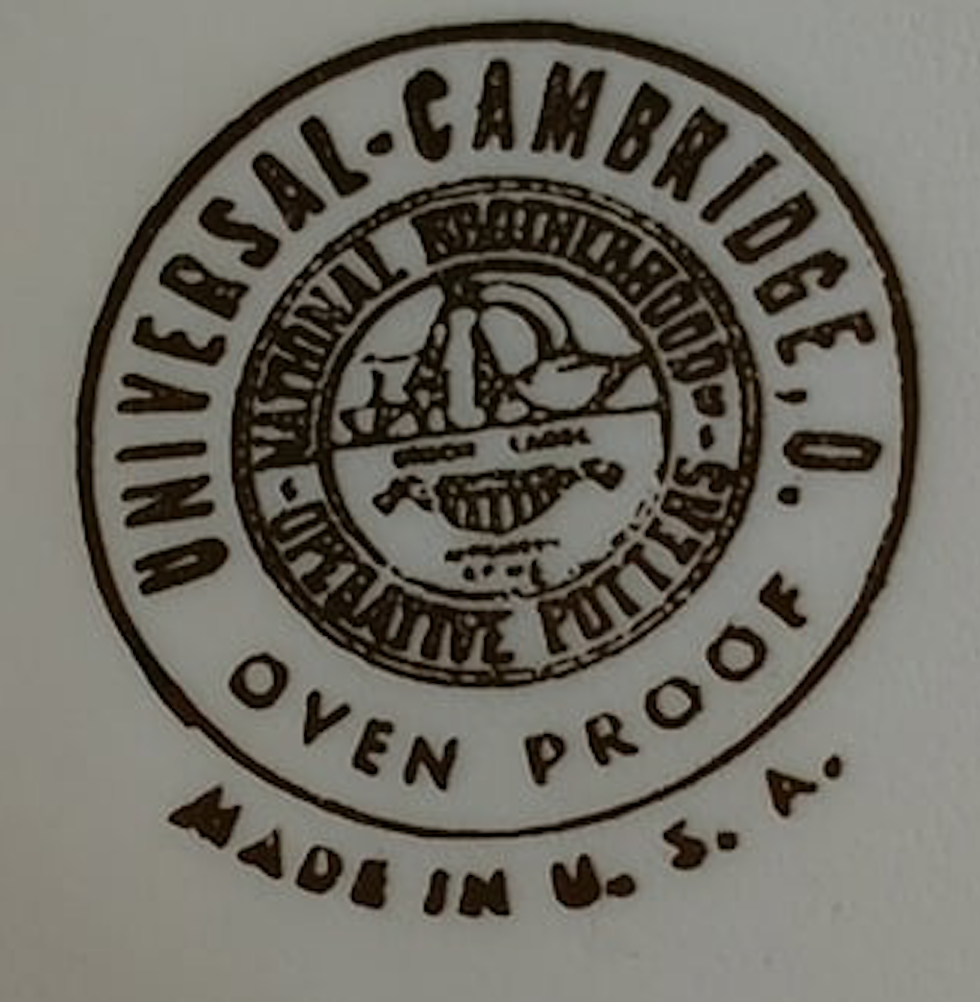

Is there a way to safely get rid of these dishes?
This link discusses that: https://tamararubin.com/2013/11/to-toss-or-not-to-toss/
Thank you for the work you do; it is so important.
Thank you. Thanks for following/ reading. I really appreciate it!
I just purchase a vintage nickel bronze and rosewood flatware set to replace our failing flatware but I realized the test strips aren’t going to be able to figure out if it’s safe. Is there a way to mail you a piece to test during your next batch of xrf testing? What’s an appropriate contribution? Thanks!
Leonne, did you get a reply? Tamara also runs a Facebook group called Lead Pb Group if you want to search for that and join and ask there. Recently and maybe still, she said she was running a sale for testing a box of so many items, I think 10-12, for $75 or the suggested donation is $10 per item.
Yes! So hard to keep up with all of the questions these days! Here’s my post about testing: https://tamararubin.com/2017/12/testmystuff/
Yes, the O for Cambridge is Ohio. I have a bow from there and after reading your article, I am Gerri g rid of it.
Hi Tamara,,
I appreciate the work you are doing in regards to lead in items we use daily. I read the story about the little boy from Wisconsin and the thing that bothers me most is the grandmother microwaved in a dish that isn’t microwavable and didn’t that bring out the lead into the cereal. I can see lead in soft items chewed by babies to be terrible, or eating lead paint, which wasn’t made to be ate, of course. But a glaze is hard and it seems the only way to release that lead into the food is in extreme temperatures. Just as they dishes are not dishwasher safe as many of the old ones were not produced during the time of regular use of dishwashers. Anymore than all these parents I see at motels microwaving their kids hot cereal in styrofoam. I talked to motel managers and they just shrug their shoulders and say that’s what they have always used. And the mothers still microwaving in plastic. If we all research microwaving it is not a safe way to cook either. So is the glaze itself able to transfer lead to food in large portions from like a dinner plate or other items not microwaved for cooking but just for serving food on? What do you know about this? Appreciate any information out there. But I’d have to say too that back in those days most of the dishes then must have been produced with the same type of glazing techniques for the most part and none are safe? What do you think?
i have a round enclosed pitcher with the same decal on bottom, brotherhood of operative potters. we dont use it, being a potter i bought it because of the decal (stamp) it does not get heated or used for liquids, does any leaching occur to surroundings?
I wish this was common knowledge that gets passed down WITH the dishes (and lead crystal). I was given antique china and had never heard of the possibility it was unsafe, until the past few weeks via this website. Was also given lead crystal that we used. It makes me sick to think about. I tried sharing the info with friends and family, and almost no one cares.
My mother has a set of bowls from this same maker from my grandmother and I was at an antique place looking at matching the set with other pieces. Now I will have to reconsider this.
Hi Sheila – thanks for commenting.
Here’s a background article on the issue:
https://tamararubin.com/topics/does-vintage-and-new-functional-pottery-and-dishware-have-unsafe-levels-of-lead/
Tamara
“Harmony House” “Betsy Rose”
I believe that the pattern is Betsy Rise, rather than Betsy “Ross,” as stated in your article.
Another online sale listing calls it “Sears Harmony House” full written content on the back of the dessert plate (links below)
I did take photos, in case the links become disabled.
I’d guess that the rose, leaves & stems were a design, (appliqué, decal or stencil?) that was available for manufacturers to purchase for use on their dishes.
Thank you for your continuing good works!
Susan
I saw a dessert plate online with clear front and back, showing the following markings:
Building logo with a banner under it.
Written within the banner: “Harmony House”
Under that written:
“Oven Proof”
“Dinner Ware”
_______.” U.S. PAT”. OFF(maybe OFF?)
UNION MADE
BETSY ROSE
Sears reference:
https://www.ebay.com/itm/284459809692
Good photo of back and front of a dessert place:
https://www.etsy.com/listing/841411826/harmony-house-betsy-rose-plate?gbraid=0AAAAADtcfRJnzCMRaUr9kKbidAg21gVEA&gpla=1&gao=1&&utm_source=google&utm_medium=cpc&utm_campaign=shopping_us_d-home_and_living-kitchen_and_dining-dining_and_serving-plates&utm_custom1=_k_EAIaIQobChMI_Nz0m-b_-wIVAb3ICh33mgajEAQYAiABEgIIKvD_BwE_k_&utm_content=go_1844702802_69827698015_346429633919_pla-306717653931_m__841411826_12768591&utm_custom2=1844702802&gbraid=0AAAAADtcfRJnzCMRaUr9kKbidAg21gVEA&gclid=EAIaIQobChMI_Nz0m-b_-wIVAb3ICh33mgajEAQYAiABEgIIKvD_BwE
Is there any information about StoneHenge table to oven table ware made in England, whether or not it has lead in them? Would appreciate your feed back. Thanks Carol
A Google Lense search of the original picture came up with an entirely different brand/design of dishes called “Harmony House Betsy Rose.” I wish I could post the picture along side this comment because it looks like an even better match. It seems a little careless to call this without any actual testing. If someone has actually tested Ballerina by Universal, I’d love to know.